Find more information in the General Comments section of the assessment
Find more information in the Rating Validity tab of the assessment
- See More
- See More
- See More
- See More
- Good
- Adequate
- Marginal
- Weak
- Poor
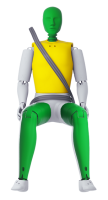 Passenger
Passenger
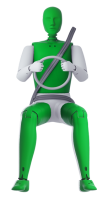 Driver
Driver
 Rear Seat
Rear Seat
 Front Seat
Front Seat
 Car
Car
 Pole
Pole
- Good
- Adequate
- Marginal
- Weak
- Poor
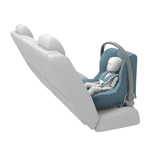
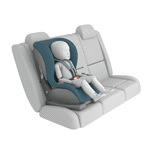
Passenger
outboard
center
Fitted to the vehicle as standard
Not fitted to the test vehicle but available as option
Not Available
-
Infants up to 13 kg
-
Infants and toddlers up to 18 kg
-
Toddlers from 9 to 18 kg
-
Toddlers over 18 kg
Easy
Difficult
Safety critical
Not allowed
| Seat Position | ||||
|---|---|---|---|---|
| Front | 2nd row | |||
| Passenger | Left | center | Right | |
| Maxi Cosi Cabriofix (Belt) | ||||
| Britax Römer King Plus (Belt) | ||||
| Britax Römer Duo Plus (ISOFIX) | ||||
| Britax Römer KidFix (Belt) | ||||
| Maxi Cosi Cabriofix & EasyFix (Belt) | ||||
| Maxi Cosi Cabriofix & EasyFix (ISOFIX) | ||||
| BeSafe iZi Kid X3 ISOfix (ISOFIX) | ||||
| Maxi Cosi Pearl & Familyfix (ISOFIX) | ||||
| Britax Römer KidFix (ISOFIX) | ||||
Easy
Difficult
Safety critical
Not allowed
Based on readings from the child dummies used in the dynamic tests, the Qashqai scored maximum points for its protection of the 1½ year infant. Forward movement of the head of the 3 year dummy, sat in a forward-facing restraint, was not excessive and, in the side impact, both dummies were properly contained by their restraints, minimising the likelihood of head contact with parts of the vehicle interior. The front passenger airbag can be disabled to allow a rearward-facing child restraint to be used in that seating position. Clear information is provided to the driver regarding the status of the airbag and the system was rewarded. The dangers of using a rearward-facing restraint in that seat without first disabling the airbag are clearly indicated inside the vehicle. All of the child restraints could be properly installed and accommodated in the car.
- Good
- Adequate
- Marginal
- Weak
- Poor

Head Impact 15.8 Pts
Pelvis Impact 3.1 Pts
Leg Impact 6.0 Pts
The bumper scored maximum points for the protection provided to pedestrians' legs. The front edge of the bumper showed good results in test sites near the centre of the car but was predominantly poor in more outboard locations. The protection provided by the bonnet was predominantly good or adequate with some poor results recorded on the stiff windscreen pillars.
- Good
- Adequate
- Marginal
- Weak
- Poor
| Speed Limit Information Function | Camera |
| Speed Limitation Function | Manually Set |
| System Name | ESP | |
| Performance | ||
| Applies To | All seats | ||
| Warning | Driver Seat | Front Passenger(s) | Rear Passenger(s) |
| Visual | |||
| Audible | |||
|
|||
| Type | Lane Departure Warning |
| Performance | |
|
LDW Confirmation Test
|
Pass |
| System Name | AEB System Name | |||
| Type | Forward Collision Warning with Auto-Brake | |||
| Operational From | 5 km/h | |||
| Additional Information | Default On | |||
| Performance | | ||||
| Autobrake Function Only | Driver reacts to warning | |||
| Operational Speed | 5-80 km/h | 5-80 km/h | ||
| Approaching a stationary car | See AEB City | Crash avoided up to 40km/h.Crash speed reduced up to 70km/h. | ||
| Approaching a slower moving car | Crash avoided up to 45km/h.Crash speed reduced up to 70km/h. | Crash avoided up to 80km/h.Crash speed reduced up to 0km/h. | ||
| Following a car at short distance | ||||
| Car in front brakes gently | Mitigation | Avoidance | ||
| Car in front brakes harshly | Mitigation | Mitigation | ||
| Following a car at long distance | ||||
| Car in front brakes gently | Mitigation | Avoidance | ||
| Car in front brakes harshly | Mitigation | Avoidance | ||
--safetyAssistCommentEN--
- Specifications
- Safety Equipment
- Videos
- Rating Validity
Specifications
Tested Model Nissan Qashqai 1.5dCi Acenta, LHD
Body Type - 5 door hatchback
Year Of Publication 2014
Kerb Weight 1388kg
VIN From Which Rating Applies - applies to all Nissan Qashqais of the specification tested
Class Small Family Car
Safety Equipment
Note: Other equipment may be available on the vehicle but was not considered in the test year.
Fitted to the vehicle as standard
Fitted to the vehicle as option
Not fitted to the test vehicle but available as option
Not Available
Not Applicable
Videos
Rating Validity




Find more information in the General Comments section of the assessment
This assessment has been updated following submission by Nissan of data for the front passenger seat. This shows that both front seats share a simlar geometry and the whiplash score has been increased.
 Share
Share
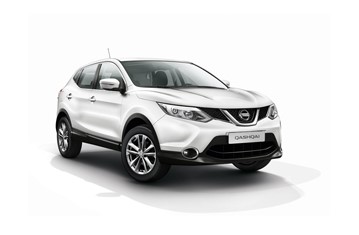

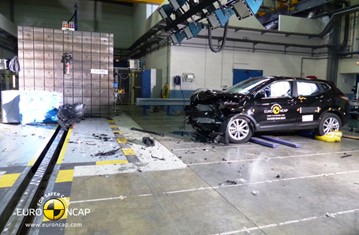







The passenger compartment of the Qashqai remained stable in the frontal impact. Dummy readings indicated good protection of the knees and femurs of the driver and passenger. Nissan showed that a similar level of protection would be provided to occupants of different sizes and to those sat in different positions. The driver dummy scored maximum points, with good protection of all body regions. Likewise, maximum points were scored in the side barrier test with all parts of the body well protected. Even in the more severe side pole test, all body regions were well protected apart from the chest, protection of which was adequate. The front seats and head restraints provided good protection against whiplash injuries in the event of a rear-end collision. A geometric assessment of the rear seats indicated good protection against whiplash.